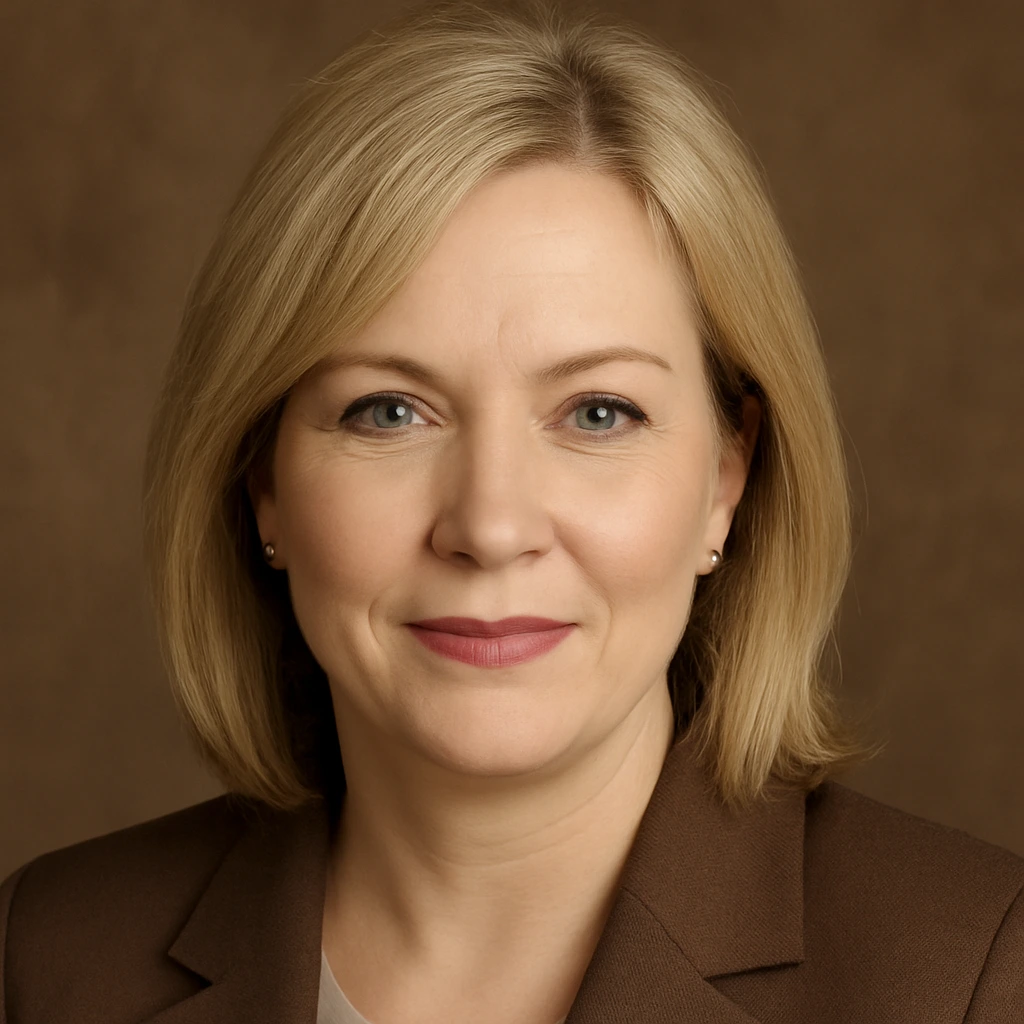
Diane Mitchell
About the Author
Numismatics Writer, History Educator & U.S. Coin Collector
Diane Mitchell, besides her many hobbies, is a coin collector. She has over 25 years of experience in numismatics. Based in Minnesota, Diane began collecting quarters during her time as a high school history teacher and has since written dozens of educational guides. They are mainly focused on American coinage, monetary policy, and historical coin values. Her primary research interest is in transitional years like 1965, when coin composition changed because of silver scarcity.
She’s best known for her approachable teaching style and coin advice. As Diane often says, “Not every coin is rare, but every coin has a story. You just have to know where to look.” Diane Mitchell believes that we need to educate everyday collectors and prove that even common coins like the 1965 quarter can cost a lot if you know what to check for.
Diane has contributed a lot during her professional career to collector forums, library exhibits, and educational workshops, and is cited for her phrase:
“When silver left circulation, knowledge became the collector’s most valuable asset.”
In her spare time, she mentors young numismatists and catalogs 20th-century coinage with a focus on clad-era anomalies.
Connect with Diane:



Introduction
The 1965 quarter is one of those coins you’ve probably handled hundreds of times without thinking twice. But not all of them are equal. Yes, most 1965 quarters are worth only their face value of 25 cents, but rare varieties still exist. In particular, you may find error coins and silver planchet strikes, which have turned up in auctions with four-figure price tags.
So, how much is a 1965 quarter worth? Before that you should look at condition, composition, and rare minting mistakes. In this guide you’ll learn value charts, silver tests, and much more. The hope is to help you figure out if your pocket change might actually be worth something.
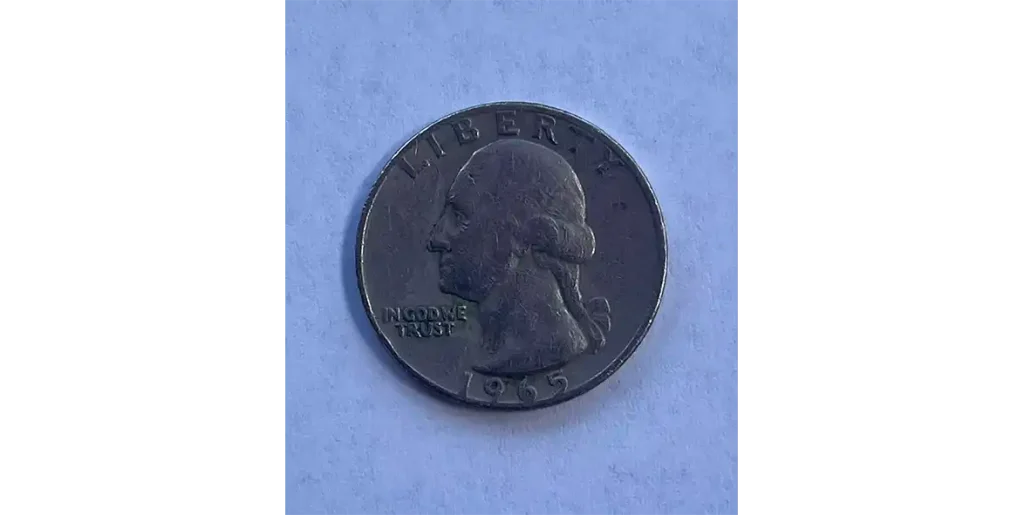
1965 Quarter Value Chart (2024 Prices)
Let’s start with a breakdown of the typical market value for these coins. Here, they are based on grade and known auction sales:
| Grade / Condition | NGC Price Guide | Auction Record Price |
|---|---|---|
| Circulated (G–XF) | $0.30 | — |
| AU (About Uncirculated) | $0.40–$0.75 | — |
| MS60–MS63 (Uncirculated) | $1.50–$5.00 | $16,800.00 (MS62, PCGC, 2020) |
| MS64 | $7.50–$8.50 | $576.00 (PCGS, 2023) |
| MS65 | $10.00 | $305.50 (PCGS, 2016) |
| MS66 | $30.00–$100.00 | $352.50 (NGC, 2015) |
| MS67 | $375.00–$900.00 | $2,585.00 (PCGS, 2017) |
| MS68 | $5,250.00 | $1,050.00 (NGC, 2024) |
| Silver Planchet Error | — | $7,800.00 (NGC, 2021) |
As you may notice, the vast majority of 1965 quarters are worth between 25 cents and a few dollars, depending on wear. But when you factor in rare minting errors, values rise quickly.
Rare & Valuable 1965 Quarter Errors
Some of the most valuable 1965 quarters didn’t leave the mint the way they were supposed to. Here are the top errors that can make your coin worth hundreds or more.
1965 Silver Quarter – Up to $7,800+
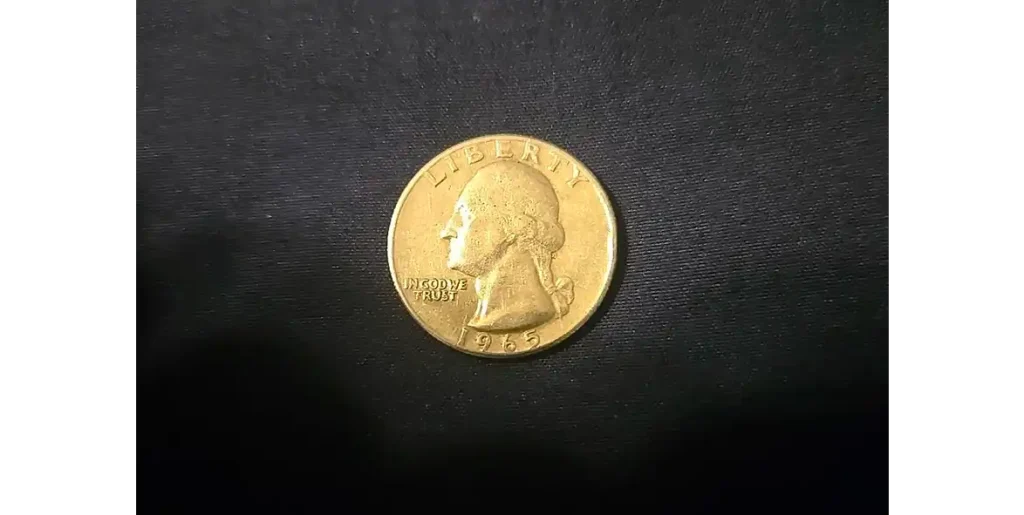
The U.S. Mint officially stopped using silver in quarters in 1965, switching to a copper-nickel clad alloy. But a few leftover silver blanks (planchets) from 1964 made it into the presses.
- Confirmed examples: only 5–10 known
- Weight test: silver = 6.25g; clad = 5.67g
- Edge check: silver quarters have a clean gray edge; clad coins reveal copper
- Magnet test: silver is not magnetic
One of these ultra-rare silver 1965 quarters sold for $7,800 in 2021.
Doubled Die Obverse (DDO) – $50 to $1,000+
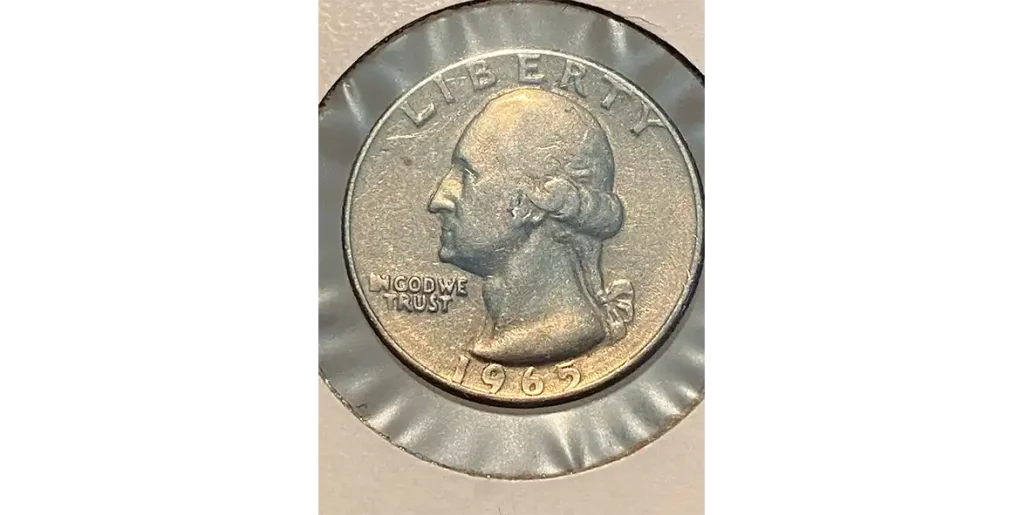
This error shows visible doubling on the lettering or date caused by a misaligned die hub. Look closely at: “LIBERTY”; “IN GOD WE TRUST”; The date “1965”
A magnifying glass (10x) is recommended for spotting the subtle doubling, higher-grade DDOs can fetch $500 or more.
Off-Center Strike – $10 to $500+
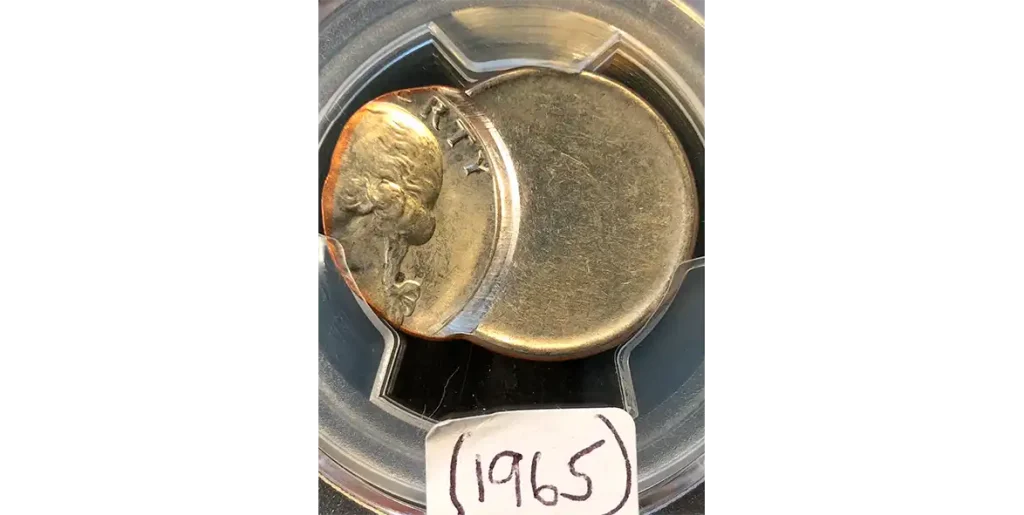
These coins were struck while misaligned, leaving part of the design missing.
- 5% Off-Center: $10–$25
- 10–20% Off-Center: $50–$150
- 30%+ Off-Center: $200–$500+
Full or partial date visibility increases value.
1965 Proof-Like Quarters (No Mint Mark) – $5 to $50
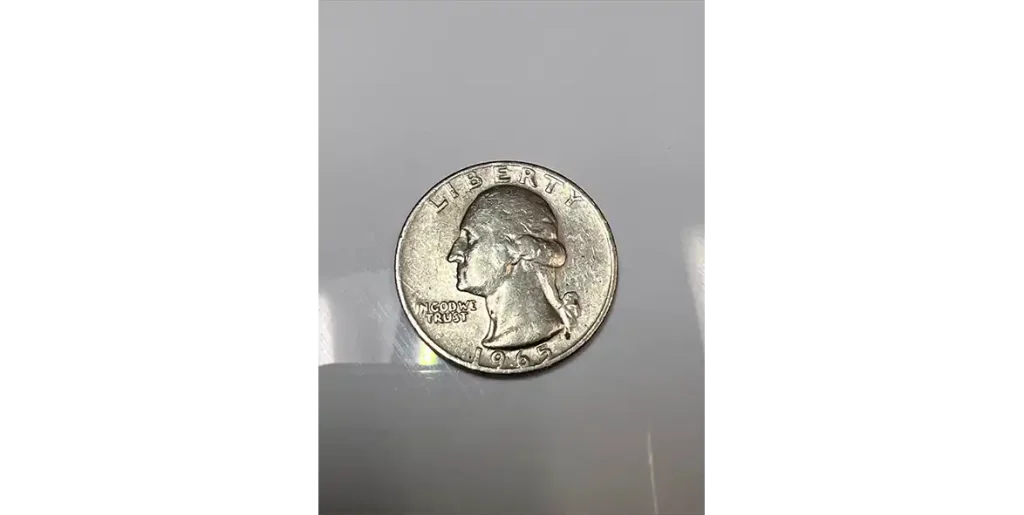
If yours has sharp details and shiny fields, it may be proof-like. A coin dealer can confirm this and offer an appraisal.
Philadelphia didn’t produce official proof coins in 1965, but a few business strikes have a mirror-like, reflective finish, similar to proofs.These coins are rare but not widely known.
How to Identify a Valuable 1965 Quarter
Wondering how much is a quarter worth from 1965? You can check it according to this list:
- Check for a mint mark: how much is a 1965 no mint mark quarter worth? Pretty much the same. All 1965 quarters were struck in Philadelphia, and no mint mark was used that year. If your coin has a “D” or “S”, it’s likely altered or fake and a genuine 1965 quarter will have no mint mark.
- Weigh the coin: use a digital gram scale to check weight: Silver quarter: 6.25g; Clad quarter: 5.67g. Even a small difference can help detect a silver error coin.
- Inspect for errors: use a 10x magnifying glass and good lighting. Look for doubled letters or numbers and search for misalignments (off-center strikes, broadstrikes). Also, check for proof-like shine on circulated coins.
- Examine the edge: silver coins have solid gray edges, clad coins show a visible copper strip.
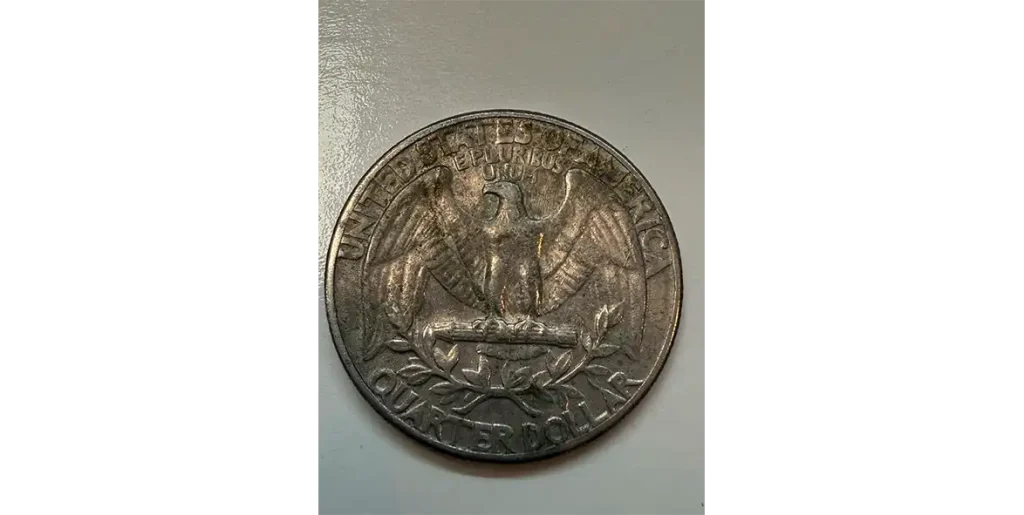
The End of Silver Quarters
The Coinage Act of 1965 officially ended silver production for U.S. quarters. Rising silver prices had caused hoarding and production problems.
- Before 1965: 90% silver, 10% copper
- After 1965: clad alloy (75% copper, 25% nickel outer; pure copper core)
New coins began circulating on July 23, 1965. President Lyndon B. Johnson made the switch to keep coin production cost-effective.
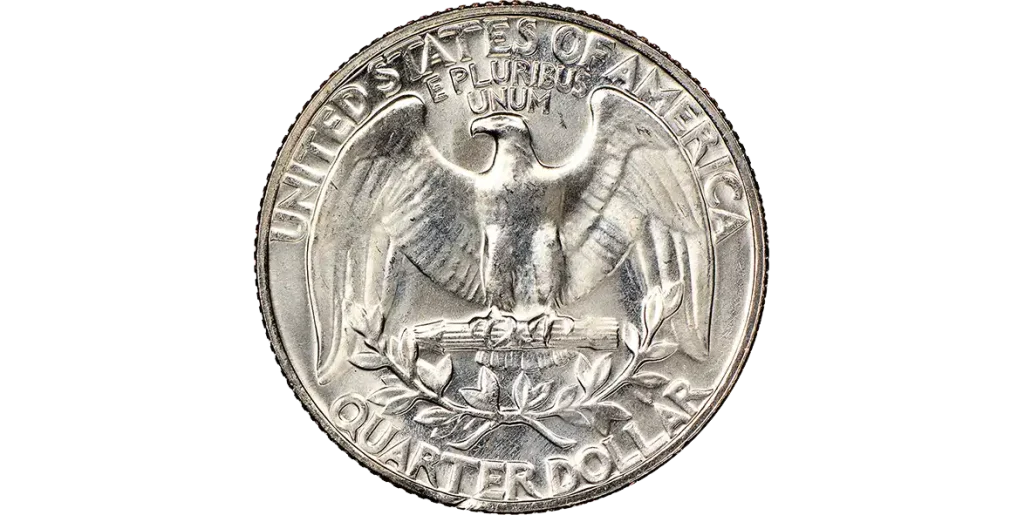
The Mint briefly continued to issue 1964-dated coins into early 1965 to maintain supply while transitioning metals.
- Mint location: Philadelphia only
- Mintage total: Over 1.8 billion
- Mint mark: None used in 1965
Coin Design (by John Flanagan)
The 1965 quarter kept the long-running Washington quarter design, introduced in 1932.
| Obverse | Bust of George Washington with “LIBERTY,” “IN GOD WE TRUST,” and the date |
| Reverse | Bald eagle on arrows and olive branches, “UNITED STATES OF AMERICA,” “E PLURIBUS UNUM,” and “QUARTER DOLLAR” |
| Edge | Reeded |
| Diameter | 24.3 mm |
| Weight | 5.67g |
No major design changes in 1965, though the new metal required slightly lower relief because of its hardness.
Frequently Asked Questions
Is a 1965 quarter worth anything without a mint mark?
Yes. In fact, all authentic 1965 quarters were minted in Philadelphia and should have no mint mark. If yours has a “D” or “S” mark, it’s not genuine, it was either altered or is a counterfeit. While the absence of a mint mark alone doesn’t add value, a 1965 quarter with no mint mark in high grade or with a rare error can definitely be worth money. Some MS67+ examples have sold for hundreds or even thousands.
What is the rarest 1965 quarter?
The rarest known variety is the 1965 silver quarter, which was accidentally struck on leftover 90% silver planchets from 1964. Only a handful are confirmed to exist, fewer than a dozen. These coins are incredibly hard to find and are often verified only through weight tests and expert evaluation. If you’ve ever wondered what’s a 1965 quarter worth in silver, the answer can easily be $5,000 to $7,000+, depending on condition.
How can I tell if my 1965 quarter is silver?
Use a digital scale to weigh the coin. Silver quarters from 1965 weigh around 6.25 gram, while regular copper-nickel clad quarters weigh 5.67 grams. You can also look at the coin’s edge, a silver quarter will have a solid gray edge, while clad coins show a copper stripe.
Lastly, do the magnet test: silver isn’t magnetic, but neither is copper-nickel, so this test helps confirm it’s not steel, but weight is more reliable. These methods are essential if you want to know what is a 1965 quarter worth, or if yours could be one.
Should I clean my 1965 quarter before selling it?
Absolutely not, cleaning a coin is one of the worst things you can do from a collector’s standpoint. Even if the coin looks dirty, cleaning it with chemicals, soap, or abrasive materials can leave tiny scratches or damage the surface.
This will reduce its value significantly. Dealers can usually tell when a coin has been cleaned, and they’ll offer much less for it—or refuse to buy it at all.
Are there proof 1965 quarters?
No official proof coins were made in 1965 because of a temporary halt in proof set production by the U.S. Mint. However, some proof-like business strike quarters have turned up. These coins have a mirror-like finish and sharp details, even though they weren’t part of a formal proof set. They’re relatively rare and can bring prices between $5 and $50, depending on condition and eye appeal.
How much is a 1965 quarter in MS65 worth?
A 1965 silver quarter worth graded MS65 (Mint State 65) by PCGS or NGC typically sells for around $10 to $20. However, prices can spike higher depending on demand and strike quality. Some coins with exceptional eye appeal or that fall just short of MS66 have reached $300+ at auction. If you’re wondering how much is a quarter from 1965 worth in high grades, it’s worth getting it graded by a professional. So if you’re wondering what is a 1965 quarter worth today, it depends on the condition and whether it has any unique features.
What does a doubled die error look like?
A doubled die occurs when the coin die used to strike the coin has a misaligned design, resulting in a duplicated image on the coin’s surface. On a 1965 doubled die quarter, look for:
- Doubling on the word “LIBERTY”
- Extra thickness or lines in “IN GOD WE TRUST”
- A doubled outline around the date “1965”
These errors can be subtle, so use a 10x magnifier to examine details. Depending on condition, doubled die errors can be worth anywhere from $50 to over $1,000.

Why are off-center quarters valuable?
Off-center errors happen when the coin is not properly aligned in the press during minting. Part of the design is missing, creating a visually dramatic effect.
- The more off-center it is, the more it’s worth.
- Coins that are 30% off-center or more, and still show a visible date, are especially desirable.
Values range from $10 to $500+, depending on the degree of misalignment. This is one of the most common, and collectible, types of 1965 quarter errors.
What’s the highest auction price for a 1965 quarter?
The most expensive 1965 quarter ever sold is a silver planchet error, certified by NGC, that brought $7,800 at auction in 2021. Another extremely high-grade clad quarter sold for $5,250 in MS68 condition. These rare examples are outliers, but they show that the answer to how much is the 1965 quarter worth can go well beyond what most people expect. So if you’re hoping to learn how much does a 1965 quarter worth, your best bet is to leave it in its natural condition.